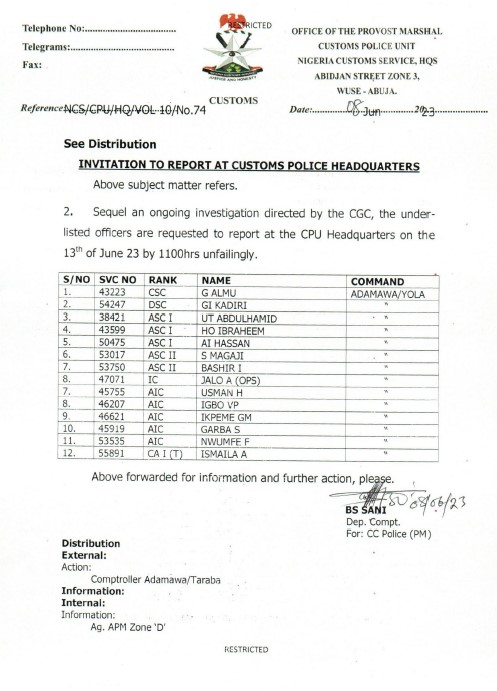Cameroon Behind 81% of CEMAC’s MFIs Non-Performing Loans, Report Says – Business in Cameroon

Report on Microfinance Sector Stability in the CEMAC Region and its Implications for Sustainable Development Goals
Executive Summary
A 2024 report from the Bank of Central African States (BEAC) indicates a significant deterioration in the loan portfolio quality of microfinance institutions (MFIs) within the Central African Economic and Monetary Community (CEMAC). The rise in non-performing loans (NPLs) presents a considerable challenge to the region’s progress towards several key Sustainable Development Goals (SDGs), particularly those related to poverty reduction, economic growth, and inequality.
Key Findings on Non-Performing Loans
The stability of the microfinance sector, a critical enabler of financial inclusion, is under threat. The data reveals a concerning trend that could undermine efforts to achieve SDG 1 (No Poverty) and SDG 10 (Reduced Inequalities).
- Total Non-Performing Loans: Reached 178 billion CFA francs in 2024.
- Annual Increase: An 8.9% rise, equivalent to 14 billion CFA francs, year-on-year.
- Primary Contributor: Cameroon accounted for 81% of the subregional decline in loan portfolio quality.
- Other Contributors: Congo contributed 9% and Gabon 7% to the increase in NPLs.
Impact on SDG 8: Decent Work and Economic Growth
As the economic engine of the CEMAC region, Cameroon’s dominant position in the microfinance network makes its portfolio health crucial for regional economic stability. The challenges faced by its MFIs directly impact SDG 8 by constraining the capital available for small and medium-sized enterprises, which are vital for job creation and sustainable economic growth.
- Cameroon’s MFI Network: As of December 31, 2024, Cameroon hosted 384 of the 521 licensed MFIs in the CEMAC zone, representing 73.7% of the total network.
- Regional Distribution of MFIs:
- Cameroon: 384
- Chad: 59
- Congo: 46
- Gabon: 18
- Central African Republic: 12
- Equatorial Guinea: 2
Regulatory Definitions and a Challenge to SDG 17: Partnerships for the Goals
The Central African Banking Commission (COBAC), the sector’s regulator, provides clear definitions for NPLs. The rising NPLs highlight the need for stronger partnerships and regulatory oversight to ensure the financial system can effectively support sustainable development.
Classification of Non-Performing Loans
COBAC defines non-performing loans, which represent a failure in the financial partnership between lenders and borrowers, as follows:
- Frozen Loans: Loans over three months past due where recovery is still anticipated, albeit delayed.
- Unpaid Loans: Any amount not paid by its scheduled due date.
- Doubtful Loans: Any credit, even with collateral, that faces a probable risk of not being fully or partially recovered.
The increase in these loan types signals financial distress among borrowers, jeopardizing the very foundation of microfinance which is built to empower vulnerable populations, a core tenet of SDG 1 (No Poverty), SDG 5 (Gender Equality), and SDG 10 (Reduced Inequalities).
1. Which SDGs are addressed or connected to the issues highlighted in the article?
SDG 1: No Poverty
- The article focuses on microfinance institutions (MFIs), which are a critical tool for poverty alleviation by providing financial services to individuals and small businesses who may not have access to traditional banking. The instability in this sector, highlighted by the rise in non-performing loans, directly threatens efforts to combat poverty.
SDG 8: Decent Work and Economic Growth
- MFIs are essential for fostering entrepreneurship and supporting micro- and small enterprises, which are significant drivers of job creation and economic growth. The article’s discussion of a deteriorating loan portfolio suggests a weakening of these financial institutions, which could restrict access to capital for businesses, thereby hindering economic growth.
SDG 10: Reduced Inequalities
- Microfinance aims to reduce financial inequality by offering services to vulnerable and low-income populations. The problems within the MFI sector in the CEMAC region, particularly in Cameroon, could lead to a credit crunch for these groups, potentially worsening financial exclusion and inequality.
SDG 17: Partnerships for the Goals
- The article mentions the roles of the Bank of Central African States (BEAC) and the Central African Banking Commission (COBAC) in monitoring and regulating the financial sector. This highlights the importance of strong, effective institutions and regional partnerships to ensure financial stability, which is a foundation for achieving sustainable development.
2. What specific targets under those SDGs can be identified based on the article’s content?
Under SDG 1: No Poverty
- Target 1.4: “By 2030, ensure that all men and women, in particular the poor and the vulnerable, have equal rights to economic resources, as well as access to… financial services, including microfinance.” The article’s entire subject is the health of the microfinance sector, which is explicitly named in this target. The rising non-performing loans signal a risk to the sustainable provision of these services.
Under SDG 8: Decent Work and Economic Growth
- Target 8.3: “Promote development-oriented policies that support productive activities, decent job creation, entrepreneurship… and encourage the formalization and growth of micro-, small- and medium-sized enterprises, including through access to financial services.” The article implies a threat to this target, as the financial instability of MFIs could limit the “access to financial services” crucial for the enterprises mentioned.
- Target 8.10: “Strengthen the capacity of domestic financial institutions to encourage and expand access to banking, insurance and financial services for all.” The article directly addresses the performance of domestic financial institutions (MFIs) in the CEMAC region. The “deterioration in the loan portfolio” indicates a weakness in their capacity that needs strengthening.
Under SDG 10: Reduced Inequalities
- Target 10.5: “Improve the regulation and monitoring of global financial markets and institutions and strengthen the implementation of such regulations.” The article mentions COBAC as the “banking and microfinance sector regulator.” The high level of non-performing loans suggests a need to improve or strengthen the implementation of regulations to ensure the stability of institutions serving vulnerable populations.
3. Are there any indicators mentioned or implied in the article that can be used to measure progress towards the identified targets?
Indicators for SDG 8 and SDG 10
- Value and growth of non-performing loans (NPLs): The article provides precise figures that serve as a direct indicator of financial institution stability (relevant to Targets 8.10 and 10.5). It states that NPLs “reached 178 billion CFA francs, up 14 billion CFA francs, or 8.9%, year-on-year.” This metric directly measures the quality of the MFI loan portfolio and the health of the sector.
- Contribution to regional NPLs by country: The article specifies that “Cameroon contributed 81% to the decline in MFI loan portfolio quality.” This breakdown is an indicator that helps pinpoint where regulatory and institutional strengthening is most needed.
Indicators for SDG 1 and SDG 8
- Number of licensed microfinance institutions: The article provides data on the scale of the microfinance network, which is an indicator of access to financial services (relevant to Targets 1.4 and 8.3). It states there are “521 licensed microfinance institutions in the CEMAC zone,” with Cameroon having “384” of them. The health and sustainability of this network, measured by NPLs, is crucial for progress.
4. Table of SDGs, Targets, and Indicators
| SDGs | Targets | Indicators |
|---|---|---|
| SDG 1: No Poverty | 1.4: Ensure access to economic resources and financial services, including microfinance, for the poor and vulnerable. |
|
| SDG 8: Decent Work and Economic Growth |
8.3: Encourage the growth of micro-, small- and medium-sized enterprises through access to financial services.
8.10: Strengthen the capacity of domestic financial institutions to expand access to financial services for all. |
|
| SDG 10: Reduced Inequalities | 10.5: Improve the regulation and monitoring of financial markets and institutions. |
|
Source: businessincameroon.com

What is Your Reaction?
 Like
0
Like
0
 Dislike
0
Dislike
0
 Love
0
Love
0
 Funny
0
Funny
0
 Angry
0
Angry
0
 Sad
0
Sad
0
 Wow
0
Wow
0












































































